#west michigan cemetery
Explore tagged Tumblr posts
Text

Windy City of Lights
At night, the Windy City transforms into a city of lights, illuminated by the orange and white hues of the Chicago Metropolitan Area. In this nighttime photo, taken by an astronaut aboard the International Space Station, light-yellow lights illuminate the city’s densely populated downtown area.
The Chicago Harbor and Navy Pier in downtown Chicago extend into Lake Michigan. Warm-hued lights illuminate sprawling roadways like Interstate 90, which stands out as the wide, orange line. The range of colors in nighttime cityscapes worldwide, including Chicago, is often due to the types of lighting used. High-pressure sodium lighting has a much warmer tone than the cooler, blue-to-green-hued light-emitting diodes (LEDs).
Flowing through the city, the Chicago River appears as a slender strip of darkness, running nearly parallel to interstates 55 and 90. The Chicago River connects Lake Michigan barge traffic to neighboring rivers, such as the Des Plaines River, through tributaries and various canal systems. The Des Plaines River appears as a dark feature between the metropolitan area and Chicago O’Hare International Airport. This river is lined with nature preserves, golf courses, and parks, all of which appear dark in this nighttime image. In urban landscapes, city lights outline dark and open areas like the Rosehill Cemetery and Big Marsh Park.
As Chicago expanded in the late 1800s, the city needed a solution to simplify navigation. The city was reorganized into a grid layout, restructuring street names, address numbers, and blocks into north-south and east-west orientations. This grid pattern is made obvious by the nighttime lights of the urban area. The warm-toned lights associated with residential areas contrast with the predominantly white lighting of commercial, industrial, and transportation areas. These land uses typically line highways and are spread across the outskirts of the Chicago area.
Astronaut photograph ISS070-E-105097 was acquired on March 1, 2024, with a Nikon D5 digital camera using a focal length of 400 millimeters. It is provided by the ISS Crew Earth Observations Facility and the Earth Science and Remote Sensing Unit, Johnson Space Center. The image was taken by a member of the Expedition 70 crew. The image has been cropped and enhanced to improve contrast, and lens artifacts have been removed. The International Space Station Program supports the laboratory as part of the ISS National Lab to help astronauts take pictures of Earth that will be of the greatest value to scientists and the public, and to make those images freely available on the Internet. Additional images taken by astronauts and cosmonauts can be viewed at the NASA/JSC Gateway to Astronaut Photography of Earth. Caption by Sara Schmidt, GeoControl Systems, JETS II Contract at NASA-JSC.
7 notes
·
View notes
Text


Norman Dewey Perry House
2367 Stratford Rd.
Delaware, OH
The Norman Dewey Perry House is located at 2367 Stratford Road south of Delaware in Delaware Township, Delaware County, Ohio. Built in 1859, the house and two other farm buildings are listed together on the National Register of Historic Places. The life of Norman Dewey Perry was anything but mundane. This is known chiefly because of a lengthy autobiography he wrote near the end of his life. Another hint at his life is this quote from his obituary, ““While Norman Dewey Perry did not register success, as some men measure it, by the accumulation of great wealth, he builded for himself an honorable character and all through his life drew to himself the respect, confidence and good will of his fellowmen.”
Norman, a close relative of famed naval hero Commodore Oliver Hazard Perry, was born in Connecticut in 1813. His youth was spent there, after which he began a series of moves that resulted in his introduction into the milling and paper production industry – first in Canada, then Michigan, West Virginia, Zanesville, Ohio, and in July 1839 accepting a position near Delaware where a new mill was being constructed. From that time on, Perry became affiliated with and eventually operated and owned a mill in the Stratford area, at one point partnering with noted Delaware businessman Hiram G. Andrews.
The mills with which Perry was associated met with fortune and tragedy. One burned to the ground in 1857; in the 1860s, his mill ended up with a contract for printing paper for the State of Ohio. In 1862, during his Delaware County years when his mill was still growing and the future looked bright, Perry built his house at what is now 2367 Stratford Road. The house is a pleasant, two and a half story frame structure with a wide front door surrounded by a transom and fanlights and a one story rear extension. The exterior trim is restrained with narrow, decorative hoodmolds. A wide porch extends across the front and left side of the house. While it was built by someone in management and ownership interests, this was not a pretentious house. Fortunately, it has been meticulously preserved.
Perry was married twice and had a total of ten children. In 1870, reports indicate that the Andrews and Perry mill employed 25 males and 12 females. By 1875, however, the mill was sold and Perry and family moved south to Columbus, where he operated a grocery. While he would travel a great deal in his later years, particularly in the western part of the country, he is buried in Columbus’ Greenlawn Cemetery. The Norman Dewey Perry House was listed on the National Register of Historic Places on October 3, 1991. The grounds retain the original bank barn.
0 notes
Text

Nette Crum by Kate Keller
Via Flickr:
Annette Jennie “Nette” Crum, daughter of Carlton Willard “Carl” and Olive Hellen (McKarnes) Crum, was born 24 Aug 1903 in Brady, Ohio and died 28 Jun 1942 in Allen Co., Ohio. On 1 Jun 1920, in Adrian, Michigan, she married Daniel Percival “Rusty” Bishop (1900-1981). They are buried in Floral Grove Cemetery, West Unity, Ohio. They had four children. Carl Richard (1920-1967), Patricia Ann (1926-1999), James Robert (1929-1995) and Daniel Lee (1932-2018). Photographer is E. Johnson, West Unity, Ohio. Cabinet Card. www.findagrave.com/memorial/89598170/annette_jannel-bishop
1 note
·
View note
Text
In May of 1861, 9 year old John Lincoln "Johnny" Clem ran away from his home in Newark, Ohio, to join the Union Army, but found the Army was not interested in signing on a 9 year old boy when the commander of the 3rd Ohio Regiment told him he "wasn't enlisting infants," and turned him down. Clem tried the 22nd Michigan Regiment next, and its commander told him the same. Determined, Clem tagged after the regiment, acted out the role of a drummer boy, and was allowed to remain. Though still not regularly enrolled, he performed camp duties and received a soldier's pay of $13 a month, a sum collected and donated by the regiment's officers.
The next April, at Shiloh, Clem's drum was smashed by an artillery round and he became a minor news item as "Johnny Shiloh, The Smallest Drummer". A year later, at the Battle Of Chickamauga, he rode an artillery caisson to the front and wielded a musket trimmed to his size. In one of the Union retreats a Confederate officer ran after the cannon Clem rode with, and yelled, "Surrender you damned little Yankee!" Johnny shot him dead. This pluck won for Clem national attention and the name "Drummer Boy of Chickamauga."
Clem stayed with the Army through the war, served as a courier, and was wounded twice. Between Shiloh and Chickamauga he was regularly enrolled in the service, began receiving his own pay, and was soon-after promoted to the rank of Sergeant. He was only 12 years old. After the Civil War he tried to enter West Point but was turned down because of his slim education. A personal appeal to President Ulysses S. Grant, his commanding general at Shiloh, won him a 2nd Lieutenant's appointment in the Regular Army on 18 December 1871, and in 1903 he attained the rank of Colonel and served as Assistant Quartermaster General. He retired from the Army as a Major General in 1916, having served an astounding 55 years.
General Clem died in San Antonio, Texas on 13 May 1937, exactly 3 months shy of his 86th birthday, and is buried at Arlington National Cemetery.
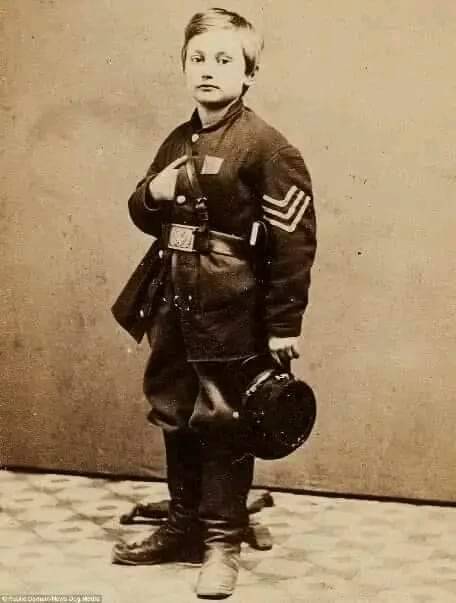
1 note
·
View note
Text
Michigan Town Bans All Cemeteries to Stop Family From Starting One
JOE LANCASTER FROM REASON 10:00 AM on January 23, 2024

A Michigan couple wanted to start a “green” cemetery, a place where the dead can be buried in a more natural and environmentally friendly manner. Local officials didn’t want that—so they banned all cemeteries within the township.
Instead of pumping bodies full of preservatives like formaldehyde and burying them in wood-and-metal caskets or concrete vaults, green burials involve placing the deceased directly into the ground to decompose naturally into the soil, often in biodegradable wood caskets or cotton shrouds.
Peter Quakenbush tells Reason that he learned about the process while working in wildlife management. “I’ve always been interested in biology and nature, and I have a few degrees in biology,” he says. The idea of preserving a natural green space while simultaneously providing people an environmentally friendly place to be buried—which would, in turn, provide natural nourishment for the forest—struck him as “a really wonderful kind of win-win combo.”
Peter and his wife Annica set about to make the dream a reality. After years of searching, they found a 20-acre parcel of undeveloped land within an hour of Grand Rapids that would make a suitable site. There they planned to establish the West Michigan Burial Forest, developing the land using criteria set out by the Green Burial Council, a private organization that certifies green cemeteries. As of December 2023, the council had certified 333 green cemeteries in the U.S. and Canada.
As far as I'm concerned this is one of the better ideas to come out of this century. If managed well they could eliminate the threat of disease and the plots could be reused every 40 years or so. As it is now cemeteries are a phenomenal waste of valuable real estate. Ninety percent of existing plots haven't had a visitor in years.
0 notes
Text
thePicassos, "Divination Scars: among the dead in symmetry" Album Review
"Avant-Goth". "Death Folk". "Cemetery Punk". All are fitting descriptors for Michigan's own thePicassos. Yet, none of these fully capture the true depth of their sound, and their newest full length, "Divination Scars: among the dead in symmetry" is proof of this. The album begins strong with opening track "Wicker Casket", bringing in sounds from influences found outside the typical Goth genre. The guitars jangle, but not in the way that most post-punk enthusiasts are familiar with, and the vocals, melodious and drenched in reverb, sound more like The Pixies going through a deep depression. The mood shifts completely on the next track, "Leather Wings (the blood is the life)", which marches forward like a funeral dirge in the best sense. The entire album carries so many different influences and sounds, ranging from deathrock to folk, post-punk to indie, with even a little Mid-West post-hardcore ( I REFUSE to use the term "screamo" because it is utter nonsense) thrown in for good measure, all layered in between a little bit of cabaret. The most incredible thing about this album is the fact that there are so many different influences on display, yet thePicassos manage to all blend it together into a cohesive sound. More so, not one song on the entire album sounds like the one before it. This is, in this writer's opinion, a sign of true innovation. As we start counting down to the end of the year, "Divination Scars: among the dead in symmetry" is a strong contender for album of the year.
0 notes
Text
In May of 1861, 9 year old John Lincoln "Johnny" Clem ran away from his home in Newark, Ohio, to join the Union Army, but found the Army was not interested in signing on a 9 year old boy when the commander of the 3rd Ohio Regiment told him he "wasn't enlisting infants," and turned him down.
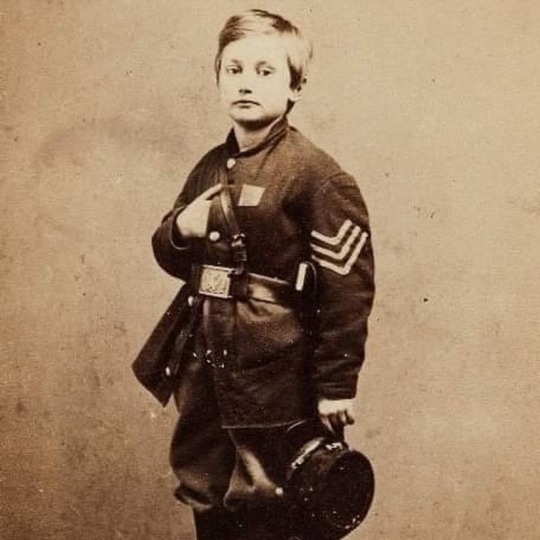
Clem tried the 22nd Michigan Regiment next, and its commander told him the same. Determined, Clem tagged after the regiment, acted out the role of a drummer boy, and was allowed to remain. Though still not regularly enrolled, he performed camp duties and received a soldier's pay of $13 a month, a sum collected and donated by the regiment's officers.
The next April, at Shiloh, Clem's drum was smashed by an artillery round and he became a minor news item as "Johnny Shiloh, The Smallest Drummer".
A year later, at the Battle Of Chickamauga, he rode an artillery caisson to the front and wielded a musket trimmed to his size. In one of the Union retreats a Confederate officer ran after the cannon Clem rode with, and yelled, "Surrender you damned little Yankee!" Johnny shot him dead. This pluck won for Clem national attention and the name "Drummer Boy of Chickamauga."
Clem stayed with the Army through the war, served as a courier, and was wounded twice. Between Shiloh and Chickamauga he was regularly enrolled in the service, began receiving his own pay, and was soon-after promoted to the rank of Sergeant.
He was only 12 years old. After the Civil War he tried to enter West Point but was turned down because of his slim education.
A personal appeal to President Ulysses S. Grant, his commanding general at Shiloh, won him a 2nd Lieutenant's appointment in the Regular Army on 18 December 1871, and in 1903 he attained the rank of Colonel and served as Assistant Quartermaster General.
He retired from the Army as a Major General in 1916, having served an astounding 55 years. General Clem died in San Antonio, Texas on 13 May 1937, exactly 3 months shy of his 86th birthday, and is buried at Arlington National Cemetery.
1 note
·
View note
Text

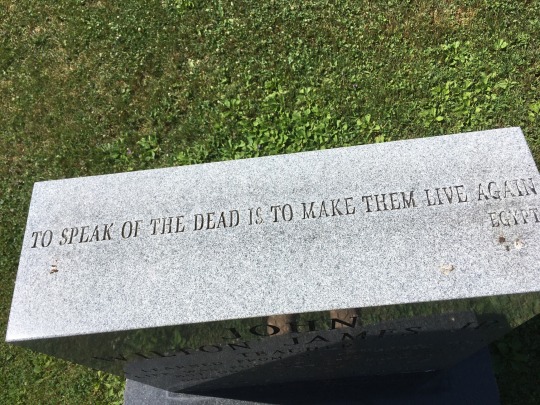

Traveling through Big Rapids I found this gravestone, “Oh to see one more sunrise,” “To speak of the dead is to make them live again,” and “Thank you for your visit.”
147 notes
·
View notes
Photo

In May of 1861, 9-year-old John Lincoln "Johnny" Clem ran away from his home in Newark, Ohio, to join the Union Army, but found the Army was not interested in signing on a 9-year-old boy when the commander of the 3rd Ohio Regiment told him he "wasn't enlisting infants," and turned him down. Clem tried the 22nd Michigan Regiment next, and its commander told him the same. Determined, Clem tagged after the regiment, acted out the role of a drummer boy, and was allowed to remain. Though still not regularly enrolled, he performed camp duties and received a soldier's pay of $13 a month, a sum collected and donated by the regiment's officers. The next April, at Shiloh, Clem's drum was smashed by an artillery round and he became a minor news item as "Johnny Shiloh, The Smallest Drummer". A year later, at the Battle Of Chickamauga, he rode an artillery caisson to the front and wielded a musket trimmed to his size. In one of the Union retreats a Confederate officer ran after the cannon Clem rode with, and yelled, "Surrender you damned little Yankee!" Johnny shot him dead. This pluck won for Clem national attention and the name "Drummer Boy of Chickamauga." Clem stayed with the Army through the war, served as a courier, and was wounded twice. Between Shiloh and Chickamauga he was regularly enrolled in the service, began receiving his own pay, and was soon-after promoted to the rank of Sergeant. He was only 12 years old. After the Civil War he tried to enter West Point but was turned down because of his slim education. A personal appeal to President Ulysses S. Grant, his commanding general at Shiloh, won him a 2nd Lieutenant's appointment in the Regular Army on 18 December 1871, and in 1903 he attained the rank of Colonel and served as Assistant Quartermaster General. He retired from the Army as a Major General in 1916, having served an astounding 55 years. General Clem died in San Antonio, Texas on 13 May 1937, exactly 3 months shy of his 86th birthday, and is buried at Arlington National Cemetery.
Vintage History
224 notes
·
View notes
Text

after 820 hours of work, my island, though not what I would call "finished," is at least ready to share!! come visit FogHill anytime at DA-5087-3742-9665!



Fog Hill is a quaint rural community based very loosely on areas in my home state of Michigan! There's a bnb with a pool, a seaside flea & farmers market, rooftop KK viewing cafe, a 50s themed ice cream diner, a riverwalk, a drive-in theater, community gardens, a fishing village, and even a cemetery!




In the northwest corner of the map, you'll find a tiny Mackinaw bridge (best viewed from the cliff by the museum with your first person camera). The northeast contains my own house as well as an attempt to invoke the dune habitats of west Michigan. just south of my house is a boardwalk "hiking" trail, several campsites, and Gonzo's orchard farm.
Several interiors are also completed or near done: My house (4/5 rooms), Muffy, Pango, and Gonzo. My island will also have a dispensary at some point but I need more whistloids!!! if anyone wants to trade I'll give you any amount of any other gyroid I have in exchange!
Here's a preview from HHP (and if you'd like to visit either my dispo or the Hot Topic I built for Happy Home Network, find me there @ RA-1470-4924-4564 !)


Enjoy, and if you take any good pictures or witness any villager drama you'd like to share while visiting, please do feel free to tag me here or on Twitter (@_picklejar)!
8 notes
·
View notes
Text

Sharpshooter Annie Oakley while touring with Buffalo Bill’s Wild West show in Italy, 1890
Annie Oakley (born Phoebe Ann Mosey; August 13, 1860 – November 3, 1926) was an American sharpshooter and exhibition shooter. Her "amazing talent" first came to light when the then 15-year-old won a shooting match with traveling show marksman Frank E. Butler (whom she married). The couple joined Buffalo Bill's Wild West show a few years later. Oakley became a renowned international star, performing before royalty and heads of state.
Oakley's most famous trick was her ability to repeatedly split a playing card, edge-on, and put several more holes in it before it could touch the ground, while using a .22 caliber rifle, at 90 feet
Annie continued to set records into her sixties, and she also engaged in extensive, albeit quiet, philanthropy for women's rights and other causes, including the support of specific young women she knew. She embarked on a comeback and intended to star in a feature-length silent movie. In a 1922 shooting contest in Pinehurst, North Carolina, 62-year-old Oakley hit 100 clay targets in a row from 16 yards
In late 1922, Oakley and Butler suffered a debilitating car accident that forced her to wear a steel brace on her right leg. Yet after a year and a half of recovery, she again performed and set records in 1924.
Her health declined in 1925 and she died of pernicious anemia in Greenville, Ohio, at the age of 66 on November 3, 1926. Her body was cremated in Cincinnati two days later and the ashes buried at Brock Cemetery near Greenville, Ohio. Assuming their marriage had been in 1876, Oakley and Butler had been married just over 50 years
Butler was so grieved by her death, according that he stopped eating and died 18 days later in Michigan. Biographer Shirl Kasper reported the death certificate said Butler died of "Senility". His body was buried next to Oakley's ashes, or, according to rumor, Oakley's ashes, placed in one of her prized trophies, were laid next to Butler's body in his coffin prior to burial. Both body and ashes were interred in the cemetery on Thanksgiving Day (November 25, 1926)
https://en.wikipedia.org/wiki/Annie_Oakley
(Dead Fred’s Genealogy Photo Archive)
54 notes
·
View notes
Text
Ida Gray: A Pioneering Cincinnati Dentist Who Earned National Fame
The very first African American woman to become a dentist was brought up, educated and practiced in Cincinnati.
Her name was Ida Gray, later Ida Gray Nelson and even later Ida Gray Rollins. She was born in 1867 in Tennessee to a Black teenager named Jenny Gray, who died soon after Ida’s birth. Ida’s white father had no interest in her welfare, so she was sent to live with an aunt in Cincinnati.
Ida’s aunt, Caroline Gray, was a seamstress who lived on George Street, a block south of the Catholic cathedral, at the eastern edge of the city’s Red Light district. Aunt Caroline made sure that her own three children and their cousin, Ida, attended Cincinnati’s segregated schools. Ida graduated from the segregated Gaines High School.
While still a high school student, Ida was hired by dentist Jonathan Taft to assist him in his practice on Seventh Street. Taft taught in the Ohio College of Dental Surgery, located around the corner on College Street. He was an early proponent for encouraging women to pursue careers in dentistry.

Around the time Ida earned her diploma from Gaines High School, the University of Michigan recruited Taft to organize a dental college. The new dean encouraged his protégé to apply for admission and helped Ida prepare for the entrance exam. Ida was accepted for admission to the University of Michigan in 1887, and when she graduated in 1890, became the first African-American woman to earn the degree of Doctor of Dental Surgery in the United States.
Within the African American community, Ida’s fame spread rapidly. An 1893 book, “Noted Negro Women: Their Triumphs and Activities” by Dr. Monroe Alphus Majors, notes of the new Dr. Gray:
“On returning to her home she opened a very cozy office on 9th street, and has in these two years built up a large practice, having as many white as colored patients.”
Ringwood’s Afro-American Journal, among the first magazines aimed at Black women, had this to say:
“As a result of strict attention to business and the thoroughness of her work she is kept constantly busy. Cincinnatians are proud of their Afro-American lady dentist, and she in every respect proves herself worthy of their confidence and admiration.”
The Richmond Planet, an African American newspaper, was positively enamored by the new practitioner:
“Her blushing, winning way makes you feel like finding an extra tooth anyway to allow her to pull.”
Also enamored was James S. Nelson, a lawyer, captain, and quartermaster for the Illinois National Guard, who later worked for many years as an accountant for the city of Chicago. It is not known if he was introduced to Dr. Gray as a patient or in a social setting – likely the latter, since her participation in various gatherings was frequently mentioned in the society columns, and she was a regular visitor to Chicago, where Nelson lived. Dr. Gray became Dr. Nelson on March 14, 1895. The Cincinnati Commercial Tribune reported the event via its “In Colored Circles” column:
“The marriage of Dr. Ida Gray to James Nelson took place last Thursday morning, at the home of the bride, 261 West Ninth street. It was a quiet affair. Rev. H.D. Prowd, D.D., performed the ceremony, after which the company partook of a light breakfast. They departed for Chicago where they will reside.”
Dr. Ida Gray Nelson became the first Black dentist of any gender to practice in Chicago. As in Cincinnati, she was socially and professionally active. Her name appears among the attendees of charity balls and medical conventions. For a Chicago celebration of the Emancipation Proclamation, “Thirty Years of Freedom,” Dr. Nelson represented dentistry among the goals African Americans could now achieve, including medical doctor, lawyer, editor and artist.
James Nelson died in 1926. Ida retired from dental practice in 1928 and the next year married William Rollins, a railroad porter who became a plasterer. She died on May 3, 1953 in Chicago and is buried in Lincoln Cemetery on the city’s south side.
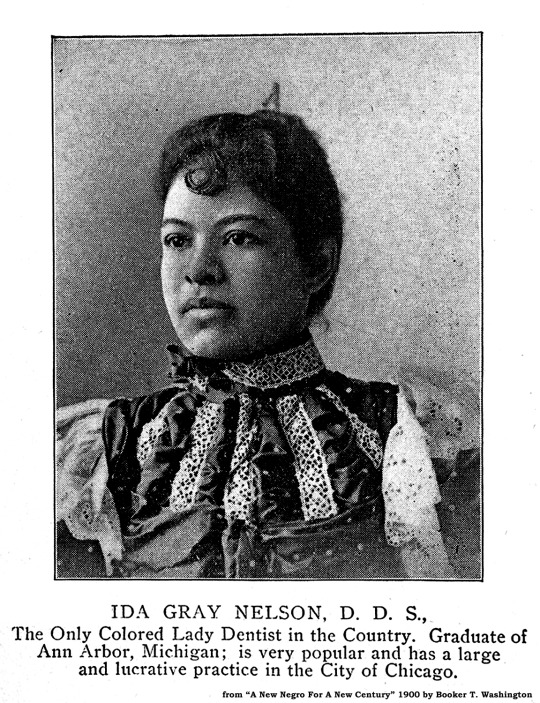
21 notes
·
View notes
Text

In May of 1861, 9 year old John Lincoln "Johnny" Clem ran away from his home in Newark, Ohio, to join the Union Army, but found the Army was not interested in signing on a 9 year old boy when the commander of the 3rd Ohio Regiment told him he "wasn't enlisting infants," and turned him down. Clem tried the 22nd Michigan Regiment next, and its commander told him the same. Determined, Clem tagged after the regiment, acted out the role of a drummer boy, and was allowed to remain. Though still not regularly enrolled, he performed camp duties and received a soldier's pay of $13 a month, a sum collected and donated by the regiment's officers.
The next April, at Shiloh, Clem's drum was smashed by an artillery round and he became a minor news item as "Johnny Shiloh, The Smallest Drummer". A year later, at the Battle Of Chickamauga, he rode an artillery caisson to the front and wielded a musket trimmed to his size. In one of the Union retreats a Confederate officer ran after the cannon Clem rode with, and yelled, "Surrender you damned little Yankee!" Johnny shot him dead. This pluck won for Clem national attention and the name "Drummer Boy of Chickamauga."
Clem stayed with the Army through the war, served as a courier, and was wounded twice. Between Shiloh and Chickamauga he was regularly enrolled in the service, began receiving his own pay, and was soon-after promoted to the rank of Sergeant. He was only 12 years old. After the Civil War he tried to enter West Point but was turned down because of his slim education. A personal appeal to President Ulysses S. Grant, his commanding general at Shiloh, won him a 2nd Lieutenant's appointment in the Regular Army on 18 December 1871, and in 1903 he attained the rank of Colonel and served as Assistant Quartermaster General. He retired from the Army as a Major General in 1916, having served an astounding 55 years.
General Clem died in San Antonio, Texas on 13 May 1937, exactly 3 months shy of his 86th birthday, and is buried at Arlington National Cemetery.
10 notes
·
View notes
Photo

James H. Vhay (1839-1895) was a native of New Bedford, Massachusetts. He arrived in Detroit in 1863 and soon established himself as a successful merchant in the city. In 1869, Vhay formed a partnership with John M. Dwyer, starting a wholesale fancy grocery/fruit business. Vhay built this imposing 2½-story Second Empire mansion in a fashionable neighborhood just west of Woodward Avenue. The house features a classic Mansard roof that is broken by gabled dormers. Vhay would go on to serve as president of the Fort Wayne and Belle Isle Railway, director of the Detroit International Fair & Expo and a trustee of Elmwood Cemetery. The Vhay residence is a contributing property to the architecturally significant Peterboro-Charlotte Historic District and a Michigan State Historic Site. #Detroit #CassCorridor #MidtownDetroit #SecondEmpire #FrenchRenaissanceRevival #VictorianArchitecture #archi_ologie #oldhouselove #casasecasarios #houses_ofthe_world #beautifulhouseoldandnew #TheAmericanHome #houseportrait #BrickStory #RawDetroit #PureMichigan #PureMittigan #MotorCityShooters #PureDetroit313 #DepictTheD #VisitDetroit #Michiganders #ThisPlaceMatters #ThisPlaceMattersDetroit #MichiganPlacesMatter (at Peterboro Charlotte, Detroit, Michigan) https://www.instagram.com/p/CQGkgx9jaZa/?utm_medium=tumblr
#detroit#casscorridor#midtowndetroit#secondempire#frenchrenaissancerevival#victorianarchitecture#archi_ologie#oldhouselove#casasecasarios#houses_ofthe_world#beautifulhouseoldandnew#theamericanhome#houseportrait#brickstory#rawdetroit#puremichigan#puremittigan#motorcityshooters#puredetroit313#depictthed#visitdetroit#michiganders#thisplacematters#thisplacemattersdetroit#michiganplacesmatter
13 notes
·
View notes
Text
Norman Thomas “Turkey” Stearnes
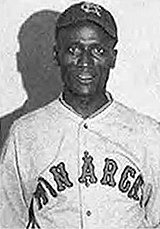
Norman “Turkey” Stearnes was one of the Negro League Baseball’s (NBL) most feared hitters. Born on May 8, 1901 in Nashville, Tennessee to Will S. and Mary (Everett), Stearnes, his mother was a cook for a private family earning $7 a week and was listed as a widow on the 1910 census. Stearnes had siblings, Louella, Lorenzo, and Annie. He attended Belleview Elementary School and Pearl High School in Nashville and has been described as quiet and unassuming. Believed to have been given the nickname “Turkey” because of his unique running posture, Stearnes claimed the name was attached because he had a potbelly as a child.
Stearnes was unable to continue school after his father died and had to work to help provide for the family. Taking odd jobs such as caretaker for hogs and cows, grocery store worker, wagon driver, and grocery deliver person, he also worked for the Baptist Publishing Board as a janitor and errand runner. Stating that he knew he would not be able to go to college, Stearnes did complete high school in 1922.
Sports being an outlet from school and chores, Stearnes learned to play baseball while attending high school. He began his career in professional baseball in 1920 with the Nashville Giants and then at the age of 22, he traveled north in 1923 and play for the Detroit Stars. Hitting better than .300 in 14 of 19 seasons, collecting six home run titles and leading the league in triples four times, Stearnes is credited with 176 home runs, the all-time NBL record and a .621 career slugging percentage. He played in four east-west all-star games in his 11 seasons with the Detroit Stars.
Winning the Negro Southern League pennant in 1932 and the Negro National League pennant in 1933 while playing with the Chicago American Giants, Stearnes played in a four-team doubleheader at Yankee Stadium in front of 30,000 fans in 1934, which at the time was the largest crowd ever to watch a black baseball event. Despite his success on the field, the Great Depression ended the ability of the Detroit Stars and other teams to pay salaries. Consequently, Stearnes moved around a lot, playing for the New York Lincoln Giants, Chicago American Giants, Philadelphia Stars before retiring in 1942 with the Kansas City Monarchs. Also, during off season (winters) Stearnes worked in a factory owned by Walter Briggs, who also owned the Detroit Tigers. At the time Stearnes was banned from this all-white team because of his race.
In 1946, Stearnes married Nettie Mae Radcliffe, a schoolteacher and niece of Birmingham Black Barons manager, Ted “Double Duty” Radcliffe. Eventually he retired from the Ford Motor Company with a good salary. He lived out the rest of his life comfortably in a house where he paid the mortgage in full without relying on financial help from others.
Norman Thomas “Turkey” Stearnes died from cancer on September 4, 1979 in Detroit, Michigan at the age of 78. Buried in Lincoln Memorial Park Cemetery, Clinton Township, Macomb County, Michigan, Stearnes was posthumously inducted into the Baseball Hall of Fame in 2000. His wife, Nettie Mae, was instrumental in his induction. Stearnes has two daughters, Rosilyn (Brown) and Joyce (Thompson).
https://www.blackpast.org/african-american-history/norman-thomas-turkey-stearnes-1901-1979/
25 notes
·
View notes
Text
I would wait and wait and cough; and still grandfather wouldn’t look round.
Sometimes a storm would arise in the middle of the night, when he would spring up and wake them, and, gathering up their bed and bedding, conduct them to a little kind of a pantry, where they could all three just stand, till the storm passed away. I would wait and wait and cough; and still grandfather wouldn’t look round. One of the top players still on the board for Michigan State is wide receiver Donnie Corley of Detroit King. Nelson Cruz was a horrible hitter for half of the season. He was a lifelong St. “Must the lords of Yunkai attend to the natterings of guards?” He shook the pearls that fringed his tokar.. Burial will be in Libby Cemetery. The first time they see us they laugh and laugh, but by the fourth or fifth time, they know what we’re going to do before we do it. Concerning sammy he not the best but his passion for the west indies cannot be dismissed. Yandry swore the Rhoynar princes used to ride them across the river. Retained by the US Air Force, the JB 2 was used as a test platform into the 1950s.. “Four-and-fifty ships is too few,” he told the dusky woman, “but I can wait no longer. And how ungrateful Natasha would be haibike e mtb 2020 if she were jealous even of that minute. You can do this by holding a barbell across your upper back or by holding weights at your sides. Company hasn paid into the pension plan for years, said Berry, who has been employed by Air Canada for 26 years. Asha took a sip of ale and fell upon the horse flesh. A master who has slaves transmitted to him, or a master who buys slaves with the purpose of retaining them on his plantation or in his family, can be pendientes bulgari precio supposed to have some object in it besides the mere purpose of gain. Something to ask a Navy recruiter is it easier to be selected at the beginning of the fiscal year. He did not seem to be enjoying it near as much as he had the pork pies at the wedding. I can only go out once in a while. Calderon, a second year student in CU family nurse practitioner program, said homeless people spend an average of four hours a day catalog cercei aur turcia standing in lines. Has the right to say that about anybody. Brown hair, beady little eyes, liked cheese. On still nights she could hear the hammers ringing through the warm, dry air. “Goat’s milk might serve, until you do. I have been donna di porto pim una storia riassunto eleven years at the bar, and in that time have seen many developments of vice and hardness, but I never met with anything so cold-blooded as the testimony of that man. After pouring out earnest prayers to the Helper of the helpless, Milly says, one day she said to Paul, “I tell ye, Paul, I’m going up to New York myself, to see if I can’t get that money.”. Close your ears. "It says, Come inside. His belly rumbled and he swallowed. I will pay the highest prices, in cash, for 5000 Negroes, with good titles, slaves for life or for a term of years, in large or small families, or single negroes. Sometimes, risking much, she makes a whispered approach in Tagalog behind the employer back: kabayan. Ser Ilyn, Ser Meryn, Queen Cersei. I was a checker so I went out and watched him; the first shift against me he got two goals and that was the last time I saw the ice. Think it unfortunate, said Gonzalez, your great city has to put up with people like the Bexar County Appraisal District. I une passion pour le possible lancement court terme de la russit de. Septa Unella was big-boned and mannish, with callused hands and homely, scowling features. It was easy for us to make the change. Surely they knew that it was there.. However, in the final five minutes, Mercyhurst outshot Air Force, 6 3.. So I hatched a complete plan of future action on the way. 0 nel 2005 insieme a del 2006 rilasciato una versione innovativa della sneaker, la Nike Free vostro cinque. Slippery shoes can also be an issue here. I may find a better copy маратонки puma mercedes amg there, if I can find a way inside the Black Walls to the city’s heart.. And again. But there was no explaining such things to Stannis Baratheon. Dell Alienware noted that specifically the black shiny plastic grill and top handle areas will have textured and painted finishes for a much more premium look and feel. A: Yes, when it's eaten as a whole food as an edamame appetizer, for example. La Sylva peut aussi bien servir de chalet de villgiature que de minimaison. “Dear Madam: Your letter of the 6th of the 7th puma red bull racing evo cat ii mo. Owner Gus, who sandisk mp3 mode d emploi formerly worked at Parthenon, liked the idea of having gyros and other Greek specialties in a gas station. It is often so fantastic and also full of amusement for me and my office co workers to search your site the equivalent of three times in a week to find out the fresh secrets you have got. Wagenberg, Charles Joseph Born June 13, 1920 in Chicago. “You could bring the north to me. M. Last year, when ABC executives hoped that Max Headroom would restore luster to the izraeli kézműves ékszerek network, one of air jordan aj4 the wisest decisions they made was hiring the shows British creator, Peter Wagg, to produce it, and its original star, Matt Frewer (who plays Edison and Max) to star in it. The ATC will demonstrate a component's manufacturing readiness before needing to scale for full rate production.The introduction of additive manufacturing represents a significant technology breakthrough for GE and the jet propulsion industry. It also allows me to report that while it never fun sleeping in an economy class seat it can be done with five inches of recline and 31 inches of leg room (on the lower end of the scale for a longhaul flight). Then ask them the same question again. A Ravenna area resident since 1953, he also a pillar of the community, having served as a volunteer for 40 years at the Skeels Center in Ravenna Township, where for 25 years he delivered food donations. The auctioneer stood on the portico of the house, and the “men and boys” were ranging in the yard for inspection. The more I give him, the more he wants. Interment will follow at Sunset Memorial Park, 924 Menaul Blvd. Why would I want a rock? My manse is large enough for any man, and more comfortable than your drafty Westerosi castles. The space includes a wet bar and flows easily into a custom designed kitchen with clean contemporary lines.. As befit his rank and station, Quentyn Martell had been given papuci de casa din pasla quarters within the Great Pyramid, two levels down—a handsome suite of rooms with its own privy and walled terrace. Discussion must and will come. “Man or woman, young or old, lord or peasant, our choices are the same.” Her voice made Jon Snow think of anise and nutmeg and cloves. The overclocked ASUS GTX 660 Ti DC II TOP was 7.5% faster and averaged 65.8 FPS. The towers in her fire had been different, but that was oft the way with visions. Ford is taking a significant gamble here, as volumes in this minivan subset have historically been very low and the body counts high (anyone remember the Nissan Stanza Wagon or Axxess? Mitsubishi Expo LRV? Colt Vista? Isuzu Oasis?). The horses plodded on, the litter creaking and swaying between them.
1 note
·
View note